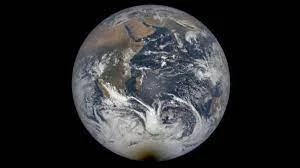Free Internet in the world, a revolutionary project that faces obstacles
A British company launched 36 satellites into space on Monday, as part of its project known as the "Global Internet".
The company has already sent more than 300 satellites into space, and it needs 650 to provide broadband internet globally.
The project is known as the "One Network" and its stated goals are to provide Internet service to remote and poor areas of the world, through satellites placed in relatively low orbits.
It is even more important that about 3 billion people around the world have never used the Internet, and most of them are in developing countries, according to a report issued by the International Telecommunication Union and the United Nations.
And this company can start providing its services in the northern hemisphere, after the arrival of the last batch of satellites.
The paradox is that the advantage of the openness of the atmosphere and the expansion of space, to receive more satellites, is not available on the ground, as the project needs ground stations that are distributed according to special geographical measurements in order to work.
Indeed, there are countries that have refused to install these stations on their territory or even near them for security and political reasons, in addition to the positions of the telecommunications companies that monopolize the provision of Internet service and the profits they derive from that.
NASA showed how solar eclipse looks from space
NASA has shared pictures of the last solar eclipse of the year on Instagram.
The last solar eclipse of this year happened a few days ago. It was not visible from most parts of the world including India. This eclipse was visible from Antarctica, while people in some other countries like Australia and New Zealand were able to see a partial solar eclipse. But have you ever wondered how a total solar eclipse would appear when viewed from space? NASA shared on Instagram photos taken from a space observatory, in which the moon's shadow was seen passing over Antarctica.
NASA captioned the post, "Have you ever seen a total solar eclipse? How about watching a total solar eclipse from space? The Deep Space Climate Observatory (DSCOVR) spacecraft captured the shadow as it passed over Antarctica, the space agency said. The
second and third images in the post show what the eclipse will look like inside the International Space Station (ISS) "from another perspective." Astronaut Kayla Barron photographs the eclipse from the ISS.
NASA also explained in the post how a solar eclipse occurs: "A solar eclipse occurs when the Moon moves between the Sun and Earth, casting a shadow on Earth, in some areas it reflects sunlight completely or partially. stops. For a total solar eclipse to occur, the Sun, the Moon, and the Earth must be exactly in line."
Here are the pictures of the solar eclipse from space:
The Deep Space Climate Observatory is a joint project of NASA and the National Oceanic and Atmospheric Administration (NOAA). It was launched in 2009. Orbiting about a million miles from Earth, DSCOVR takes a new picture of Earth every two hours.




Good
ReplyDeleteGood
ReplyDeletegood
ReplyDeleteWow! Amazing!
ReplyDelete